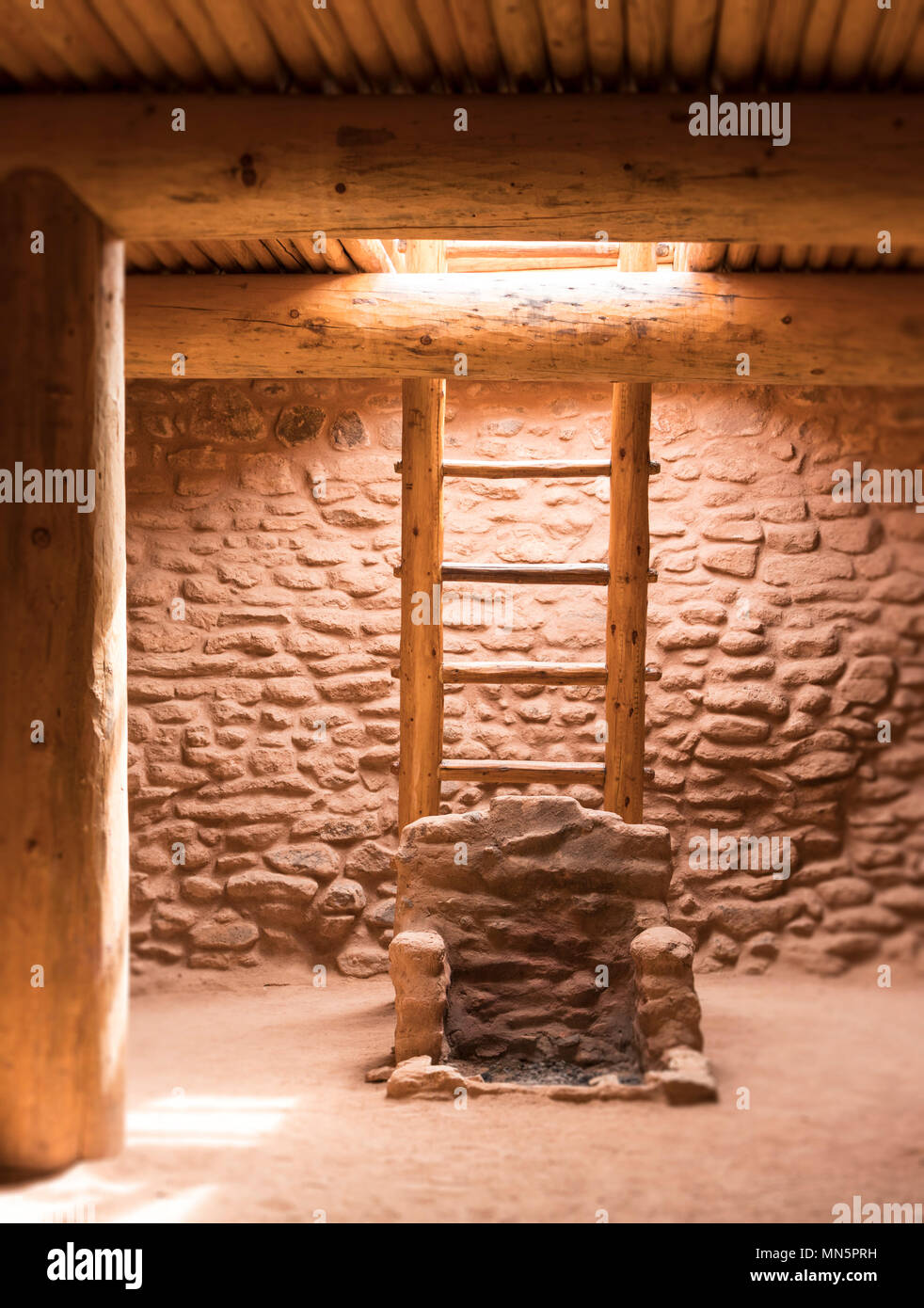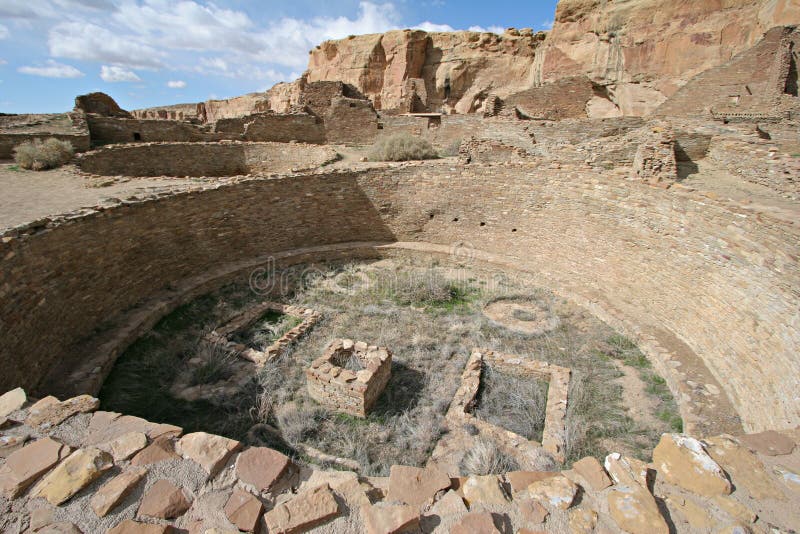
Echoes from the Earth: The Enduring Mystery and Power of Pueblo Kiva Ceremonies
Deep within the arid landscapes of the American Southwest, where time is measured by the sun’s arc across vast skies and the subtle shifts of seasons, lies a profound testament to human spirituality and cultural resilience: the Pueblo kiva. More than mere architectural remnants, these subterranean, circular chambers are living shrines, silent witnesses to millennia of ritual, prayer, and communal identity. The kiva ceremonies, shrouded in the dignified secrecy of tradition, represent the pulsating heart of Pueblo culture, connecting the living generations to their ancestors, the earth, and the cosmos itself. This article delves into the sacred underground rituals, exploring their ancient origins, intricate symbolism, and enduring cultural significance in the modern world.
The Sacred Architecture of Connection: What is a Kiva?
At its most basic, a kiva is a ceremonial structure, typically circular and built partially or entirely underground. The term "kiva" itself is derived from the Hopi language, but similar structures and their associated rituals are central to all nineteen federally recognized Pueblo tribes, including the Zuni, Acoma, Taos, and Santa Clara Pueblos, among others. Their presence dates back to the Ancestral Puebloans (formerly known as Anasazi), with archaeological evidence pointing to their widespread use from as early as 750 AD. Magnificent examples, such as the Great Kivas of Chaco Canyon, some measuring over 60 feet in diameter, stand as monumental reminders of their ancient importance.
Each kiva, whether an ancient ruin or a currently active ceremonial space, shares common architectural features imbued with profound symbolic meaning. Entry is traditionally via a ladder through an opening in the roof, symbolizing emergence from the earth. Inside, the circular form represents the horizon, the cosmos, and the cyclical nature of life. A central fire pit provides warmth and light, its smoke carrying prayers skyward. Ventilation shafts ensure air circulation, often ingeniously designed to prevent smoke from filling the chamber. Benches or banquettes line the perimeter, providing seating for participants.
However, the most potent symbolic feature is the sipapu, a small, often stone-lined hole in the floor. This aperture is not merely a physical detail; it is the mythological point of emergence, the place where the ancestors of the Pueblo people are believed to have first entered this world from the underworld. It is a direct umbilical cord to Mother Earth, a tangible link to the primordial past, and a constant reminder of the Pueblo origin stories.

The Tapestry of Ritual: Purpose and Practice
Kiva ceremonies are not monolithic; they are a diverse array of rituals, each serving specific purposes within the broader framework of Pueblo cosmology. They are intrinsically tied to the agricultural cycle, the solstices and equinoxes, and the fundamental human needs for well-being, fertility, and community cohesion.
One primary purpose is to invoke rain. In the arid Southwest, water is life, and elaborate rain dances and ceremonies, often featuring Kachina spirits (divine messengers embodying natural phenomena and ancestral spirits), are performed in the kivas to ensure bountiful harvests. These rituals are not simply petitions; they are active participations in the delicate balance of the natural world, a communal effort to maintain harmony.
Other ceremonies focus on healing, initiation rites for young men, seasonal renewals, and the general spiritual health of the community. They are often long, sometimes extending for several days, involving fasting, prayer, chanting, drumming, and the sacred consumption of traditional foods. Participants, typically male religious leaders and initiated members, descend into the kiva, leaving the mundane world behind to enter a consecrated space where the veil between the ordinary and the sacred is thinnest.
The atmosphere within a kiva during a ceremony is one of profound reverence. In the flickering firelight, ancient chants resonate, their rhythms echoing down through generations. Prayers are offered for the community, for the earth, for peace, and for the continuity of life. Offerings of cornmeal, tobacco, or other sacred items are made, symbolizing reciprocity with the spirit world. These rituals reinforce the Pueblo worldview, which sees all life—human, animal, plant, and spirit—as interconnected and interdependent.
Cultural Significance: Pillars of Identity and Resilience
The enduring practice of kiva ceremonies is far more than a quaint tradition; it is a vital wellspring of cultural identity, a powerful mechanism for social cohesion, and a profound expression of Pueblo resilience in the face of centuries of external pressures.
Firstly, kiva ceremonies serve as the bedrock of cultural continuity. They are living transmissions of ancient knowledge, ethical frameworks, and communal values. Through participation and observation, younger generations learn the complex cosmology, the ancestral stories, and the responsibilities that come with being a member of their particular Pueblo. As one Pueblo elder observed, "The kiva is where our history lives, where our identity is forged. Without it, we would lose ourselves."
Secondly, these rituals are central to the Pueblo worldview and cosmology. They embody a holistic understanding of existence, where humanity is not separate from nature but an integral part of it. The descent into the earth, the connection to the sipapu, and the prayers directed to the sky, the four directions, and various spirit beings reinforce a sense of profound respect and interconnectedness with all creation. This worldview fosters a deep sense of stewardship for the land, which is seen not as a commodity but as a sacred relative.

Thirdly, kiva ceremonies are instrumental in social cohesion. They bring the community together in a shared spiritual endeavor, reinforcing collective identity and mutual responsibility. The structured roles within the ceremonies—from the religious leaders who guide the rituals to the individuals who prepare the ceremonial spaces and foods—create a robust social fabric. This communal participation strengthens bonds, resolves disputes, and ensures the perpetuation of shared values that are essential for the survival of any society.
Finally, the kiva stands as a powerful symbol of Pueblo resilience. Despite centuries of colonization, attempts at forced assimilation by Spanish and later American authorities, and the pressures of the modern world, the kiva ceremonies have persisted. They have been conducted in secrecy when necessary, adapted subtly over time, but their core essence has remained inviolable. This unwavering commitment to their sacred traditions highlights an incredible strength of spirit and an unyielding determination to preserve their unique cultural heritage.
Kivas in the Modern World: Challenges and Adaptations
In the 21st century, Pueblo kiva ceremonies face a complex interplay of challenges and adaptations. The modern world, with its rapid technological advancements, globalized culture, and economic pressures, inevitably impacts traditional societies.
One significant challenge is the maintenance of secrecy and sacredness in an increasingly transparent and commodified world. While some ceremonies are public or semi-public (like certain dances in plaza areas), the core kiva rituals remain private and often secret, accessible only to initiated members. This protective measure is essential for preserving the integrity and power of the rituals. However, balancing this need for privacy with the desire to educate outsiders about the importance of Pueblo culture requires careful navigation. The proliferation of social media and tourist curiosity can sometimes infringe upon these sacred boundaries.
Another challenge is the engagement of younger generations. While many young Pueblo people remain deeply committed to their traditions, the allure of urban life, Western education, and different career paths can draw some away from the rigorous demands of ceremonial life. Elders and cultural leaders constantly work to ensure that the ancient knowledge is passed down effectively, finding innovative ways to make the traditions relevant and compelling for contemporary youth.
Despite these challenges, Pueblo kiva ceremonies continue to thrive. They are not static, museum pieces but living, evolving traditions. The Pueblo people have demonstrated an extraordinary capacity for adaptation, integrating elements of the modern world where appropriate, while fiercely safeguarding the core spiritual tenets of their heritage. The enduring presence of active kivas, humming with ancient chants and prayers, is a testament to this remarkable resilience.
Respect and Reverence: An Outsider’s Perspective
For those outside the Pueblo communities, approaching the subject of kiva ceremonies requires profound respect and humility. These are not tourist attractions but living shrines, the very heart of a vibrant and ancient culture. While public dances and festivals offer glimpses into Pueblo life, the inner workings of the kiva remain sacred and private. The most respectful approach is to acknowledge the depth and significance of these traditions, to understand their role in sustaining a unique way of life, and to appreciate the privilege of being in proximity to such an enduring spiritual legacy.
In conclusion, the Pueblo kiva ceremonies are far more than historical artifacts or esoteric rituals. They are vibrant, dynamic expressions of a profound spiritual connection to the earth, the ancestors, and the cosmos. They are the arteries through which the lifeblood of Pueblo culture flows, ensuring the continuity of identity, the transmission of ancient wisdom, and the enduring resilience of a people deeply rooted in their sacred landscapes. As long as the ladders descend into these sacred underground chambers, the echoes of ancient prayers will continue to rise, binding generations and reaffirming the timeless power of human spirituality.


